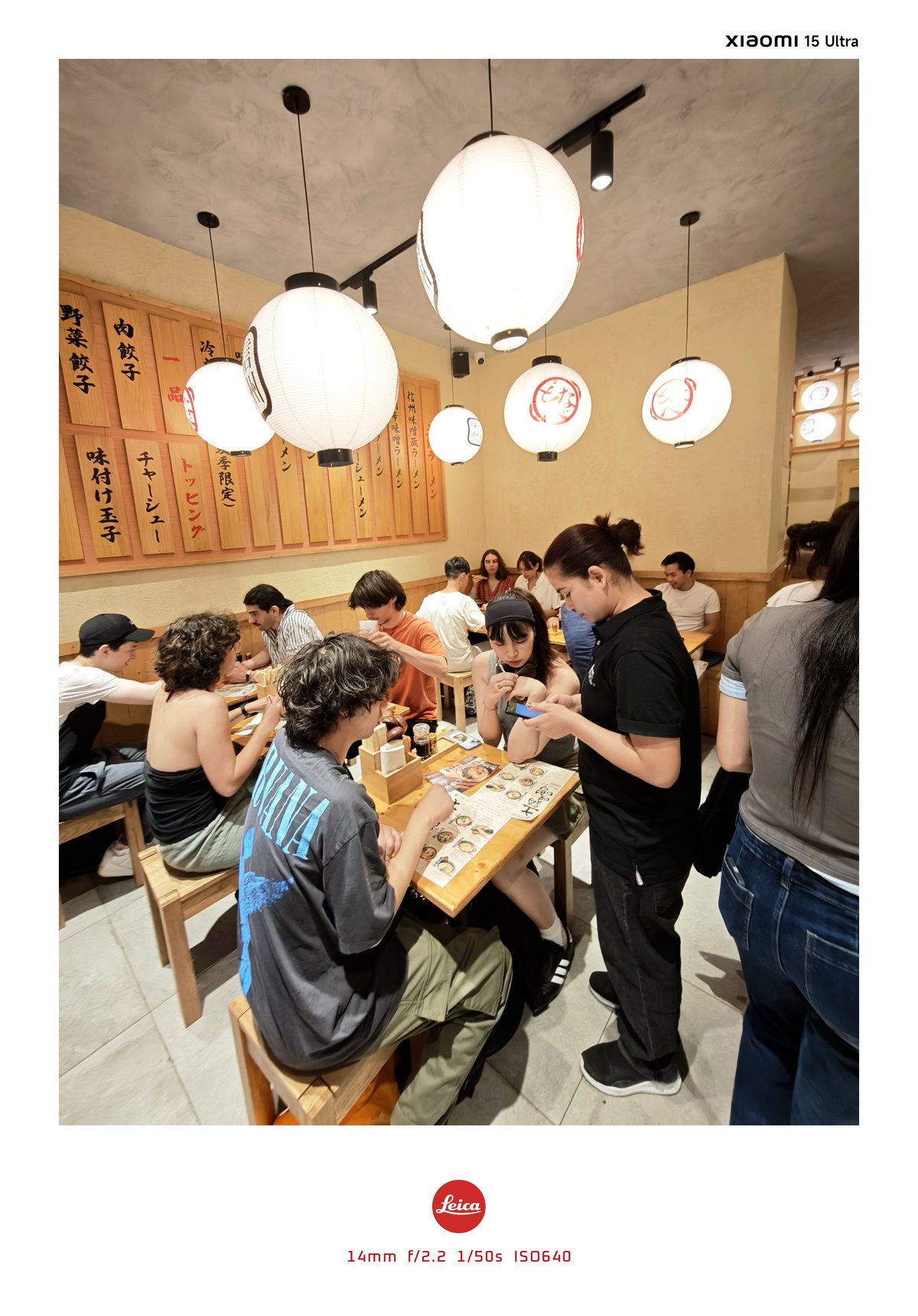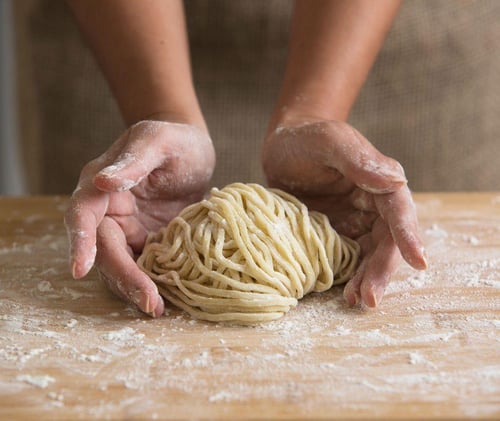
.jpg)
ลงทุน ร้าน รา เม ง
อาหารอร่อย ดั้งเดิม และดีต่อสุขภาพเพื่อชีวิตที่ยืนยาว
Tasty, Traditional and Healthy Meals for a Longlife
Nagano made Miso Ramen served in a clay pot from TAKE-SAN Restaurant
VEGAN Ramen/ no meat, no fish, no eggs and no MSG
Characteristics from the customer’s point of view
- “They serve very rich miso ramen, but there is also a healthy vegetarian option in the menu.”
- “The vegetarian ramen contains no animal products, and no MSG- Thus giving you a clean aftertaste with healthy benefits.”
- “Japanese traditional clay pots are used for the ramen. Preserving the temperature, so that you can enjoy it till the last drop of soup.”
- “Japan’s largest produced miso, Shinshu Miso, is generously used in the ramen.

Characteristics of the business
- Take-san created the plant-based vegan menu for the people from different cultural backgrounds and beliefs to enjoy its ramen as well as managed to keep the true essence of what’s good about Japanese ramen
- Plant-based ingredients cost less than meat-based. The cost of Take-san ramen is less than ramen shops in general
- There is also a vegetarian gyoza option as well as the regular gyoza
- Products that have many repeat customers
- You will have the noodle making machine in the restaurant and make the best noodle possible using locally sourced flour. Delicious and cost-effective!
Franchise store in Mongolia







Franchisee Voice
The moment I visited the 240-year-old MISO factory in OBUSE and walked into my first TAKE-SAN store, I was certain that "This is going to be good! I was convinced that it would be good for my country too. Within a year of opening the first store, I made the decision to open the second store. Although the opening has been delayed due to the pandemic, I am confident that the second store will be a great success.
Investment information
Initial investment cost: from USD 200,000 per store
Japan-made equipment required: specific noodle making machine and noodle boiling machine
Number of managers required: min. 1
Retail space required: 75sqm-150sqm
Number of staff required per store: min.4
TAKE-SAN's story

Miso soup is an integral part of Japanese traditional home cooking, and it’s something you see every day at the table.
Sometimes with tofu, sometimes with wakame (seaweed)… What’s inside it may be different, but it is definitely home-made every day.
Miso is the base of Miso soup.
The Miso that has 70% of the Japanese market share is the Shinshu Miso. Shinshu is the old name for Nagano prefecture.
In Shinshu/ Nagano, there is an old town called Obuse-machi. This town is also well-known as Hokusai Katsushika lived and drew his great works in his last years here. Hokusai’s most monumental work from the Hokusai Exhibition that the British Museum hosted is kept in Obuse-machi.
Yet, there is a Miso manufacturer which has been in this town even before Hokusai (1760-1849): KOKUHEI-MISO, an establishment of 240 years.
KOKUHEI-MISO has been protecting the traditional way of making Miso for the last 240 years. However, it has opened the door to the new world since they met TAKE-SAN.
TAKÉ-SAN's founder, Tetsuaki Takeda is a Nagano-born Ramen artist. He got trained in Tokyo and, in 2008, he opened the ramen store called “TAKÉ-SAN” in his home city, Nagano.
He developed the Clay-pot Miso Ramen, aiming to create Ramen with generous use of Shinshu Miso, and in a clay pot to be suitable for Shinshu’s cold climate.
The game-changer who Tetsuaki Takeda encountered, after 10 years of experimenting with ways to improve his Miso Ramen every single day, was the KOKUHEI-MISO. The owner of KOKUHEI-MISO was moved by Tetsuaki’s passion to master his Miso Ramen. He created special miso for TAKÉ-SAN. And he has led TAKE-SAN to open the second store in Obuse-machi in one corner of their company-owned land.
This is how 240 years of history has met the Miso Ramen artist.
Shinshu Miso Ramen has no animal products, or MSG. In 2018, this ramen will be coming to challenge the world to show you it’s worthy of 230 years of history.
An introduction to Miso

“Miso means ‘fermented beans’ in Japanese. In Japan, people begin their day with a bowl of miso soup, believed to stimulate digestion and energise the body.
A traditional ingredient in Japanese and Chinese diets, miso paste is made from fermented soybeans and grains and contains millions of beneficial bacteria. There are hundreds of different types of miso and different versions are linked with regional cuisines, identities and flavours.
The protein-rich paste is highly popular as it provides an instant flavour foundation. It adds the fifth taste, known as ‘umami’, to all sorts of dishes including soups/broths, salad dressings, vegetables, stews, glazes, and marinades.
Miso is rich in essential minerals and a good source of various B vitamins, vitamins E, K and folic acid. As a fermented food, miso provides the gut with beneficial bacteria that help us to stay healthy, vibrant and happy; good gut health is known to be linked to our overall mental and physical wellness.”
https://www.bbcgoodfood.com/howto/guide/health-benefits-miso
One of the major factor for Japan’s long average life expectancy is the diet.

This chart was taken from Asahi Shinbun
A study by Ministry of Health, Labor and Welfare shows that people who consumed more miso soups daily had less chance of producing breast cancer (2003).

Miso soup intake frequency
VEGANES SUMMERFEST BERLIN
The Vegan Summer Festival, Berlin
23. August 2019 - 25. August 2019
We were the first Japanese ramen shop to participate in the VEGAN festival in Berlin.
We set up a small pop-up shop and served 200 bowls of ramen every day.
We brought in ingredients from Japan, some of which were sourced locally, and made our ramen with great care.
A lot of customers were happy with our ramen. We confirmed the possibility of opening a shop in Berlin, in Germany, and in EUROPE.
Wir waren der erste japanische Ramenladen, der am VEGAN-Festival in Berlin teilnahm.
Wir richteten einen kleinen Pop-up-Shop ein und servierten täglich 200 Schalen Ramen.
Wir brachten Zutaten aus Japan mit, von denen einige aus der Region stammten, und stellten unsere Ramen mit großer Sorgfalt her.
Viele Kunden waren mit unseren Ramen zufrieden. Wir bestätigten die Möglichkeit, ein Geschäft in Berlin, in Deutschland und in Europa zu eröffnen.
私たちは、日本のラーメン店として、はじめてベルリンのVEGANフェスティバルに参加しました。
小さなポップアップショップを作り、毎日200杯のラーメンを提供しました。
日本から材料を持ち込み、一部は現地で調達し、丁寧にラーメンを作りました。
大勢のお客様に喜んでいただきました。ベルリンでの出店、ドイツでの出店、EUROPEでの出店の可能性を確認しました。
Es ist die VEGAN-Küche, die traditionelle japanische Hausmannskost verwendet.
Bitte probieren Sie den Geschmack von fermentierten Lebensmitteln namens "MISO".
Wir sind ein berühmtes MISO VEGAN Restaurant in Japan.
日本の伝統的料理技法を活用した一品です。
「味噌」という発酵食品の美味しさと機能をご紹介出来る一品です。
VEGANは日本ではまだマイナーですが、私たちは、日本でも最もおいしい味噌VEGANラーメン店です。









